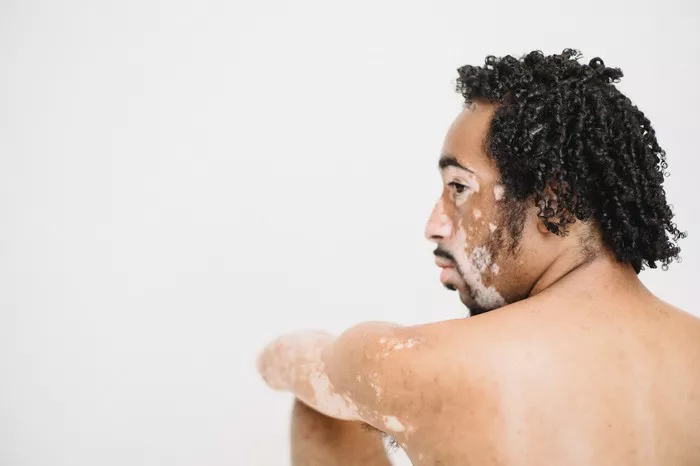Ringworm, this common and contagious skin infection can be itchy and uncomfortable, leading many to succumb to the temptation to scratch the affected areas. However, scratching ringworm may have consequences that extend beyond momentary relief. In this article, we delve into the reasons behind the itch, the potential risks of scratching ringworm, and effective strategies for managing the discomfort.
Understanding Ringworm: A Fungal Intruder
Ringworm, medically known as dermatophytosis, is a fungal infection that can affect the skin, nails, and even the scalp. Despite its name, the condition is not caused by a worm but rather by various fungi, primarily belonging to the dermatophyte group. These fungi thrive in warm, moist environments, making certain areas of the body more susceptible to infection.
The hallmark symptom of ringworm is a circular, red, and scaly rash that often has a raised border resembling a ring – hence the name. The infection is highly contagious and can be transmitted through direct skin-to-skin contact with an infected person or by coming into contact with contaminated surfaces, such as towels or shared personal items.
The Itch Factor: Why Does Ringworm Itch?
The intense itch associated with ringworm is a result of the body’s immune response to the invading fungus. When the fungus infects the skin, it triggers an inflammatory reaction that leads to the release of histamines. Histamines are chemicals that cause itching, redness, and swelling – all common symptoms of ringworm.
The itch serves as a warning sign, signaling the presence of an intruder and prompting the affected individual to take action. While this natural response is essential for the body’s defense mechanism, it can also become a source of significant discomfort, prompting the urge to scratch.
The Temptation to Scratch: A Common Dilemma
The sensation of itching is a universal experience, and when faced with the persistent itch caused by ringworm, the desire to scratch can be overwhelming. Scratching is a natural and instinctive response to relieve discomfort, but when it comes to ringworm, this seemingly innocent act may have unintended consequences.
One of the primary reasons people scratch ringworm is to alleviate the itch and gain temporary relief. Scratching provides a sensory distraction and can momentarily reduce the intensity of the itch. However, it is crucial to recognize that scratching is a double-edged sword that can exacerbate the situation.
The Risks of Scratching Ringworm: Unveiling the Consequences
While scratching ringworm may provide momentary relief, it can have several adverse effects on the affected skin and potentially worsen the overall condition. Here are some of the risks associated with scratching ringworm:
1. Spread of Infection:
Ringworm is highly contagious, and scratching can inadvertently spread the fungal spores to other parts of the body or to individuals in close contact. This not only prolongs the recovery process but also increases the risk of infecting others.
2. Skin Damage:
Scratching can cause trauma to the already compromised skin, leading to open sores, cuts, and abrasions. These openings create entry points for bacteria, increasing the likelihood of secondary bacterial infections that can further complicate the healing process.
3. Delayed Healing:
Scratching disrupts the skin’s natural healing process. Constant irritation can lead to prolonged inflammation, hindering the body’s ability to repair the affected area efficiently. This may result in a more extended recovery time and increased discomfort.
4. Exacerbation of Symptoms:
Scratching can intensify the inflammatory response, making the itch even more pronounced. This creates a vicious cycle where scratching provides temporary relief, but the subsequent inflammation triggers more itching, leading to a continuous loop of discomfort.
5. Scarring:
Persistent scratching may leave scars on the skin, especially if the fingernails cause deep abrasions. These scars can be a lasting reminder of the battle with ringworm and may affect one’s self-esteem and confidence.
Managing the Itch without Scratching: Effective Strategies
While the urge to scratch ringworm can be strong, it is essential to adopt alternative strategies to manage the itch and promote healing. Here are some effective ways to alleviate the discomfort without resorting to scratching:
1. Topical Antifungal Medications:
Over-the-counter antifungal creams and ointments can be applied directly to the affected areas. These medications help eliminate the fungus, reducing the itch and promoting healing. Follow the instructions on the product label and continue treatment for the recommended duration.
2. Keep the Area Clean and Dry:
Maintaining good hygiene is crucial in managing ringworm. Wash the affected area with mild soap and water, and pat it dry gently with a clean towel. Avoid excessive moisture, as fungi thrive in damp environments.
3. Avoid Tight Clothing:
Wearing loose-fitting, breathable clothing can help reduce friction and irritation on the affected skin. Tight clothing can trap moisture, creating an ideal environment for fungal growth.
4. Use Cold Compresses:
Applying cold compresses to the affected area can provide relief from itching and reduce inflammation. Use a clean cloth soaked in cold water and apply it to the rash for 15-20 minutes at a time.
5. Trim Fingernails Short:
Keeping fingernails short helps minimize the risk of causing skin damage while scratching. Short nails are less likely to break the skin, reducing the chances of bacterial infections.
6. Seek Professional Medical Advice:
If the symptoms persist or worsen despite self-care measures, it is crucial to consult a healthcare professional. They can provide a proper diagnosis, prescribe stronger antifungal medications if necessary, and offer guidance on managing the condition.
Conclusion
In the battle against ringworm, the temptation to scratch is a common dilemma faced by many. While scratching may provide momentary relief, it comes with potential risks that can complicate the healing process. Understanding the reasons behind the itch, the consequences of scratching, and adopting alternative strategies for relief are crucial steps in managing ringworm effectively.
Choosing a balanced approach that prioritizes the long-term health of the skin is essential. By incorporating proper hygiene practices, using antifungal medications, and resisting the urge to scratch, individuals can navigate the challenges posed by ringworm with a focus on both immediate relief and overall well-being. In the quest for comfort, striking this balance ensures a smoother journey towards healing and recovery.

























